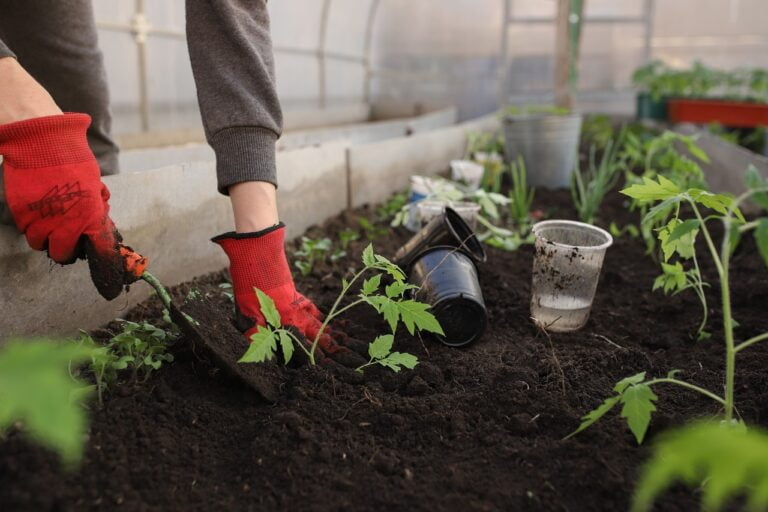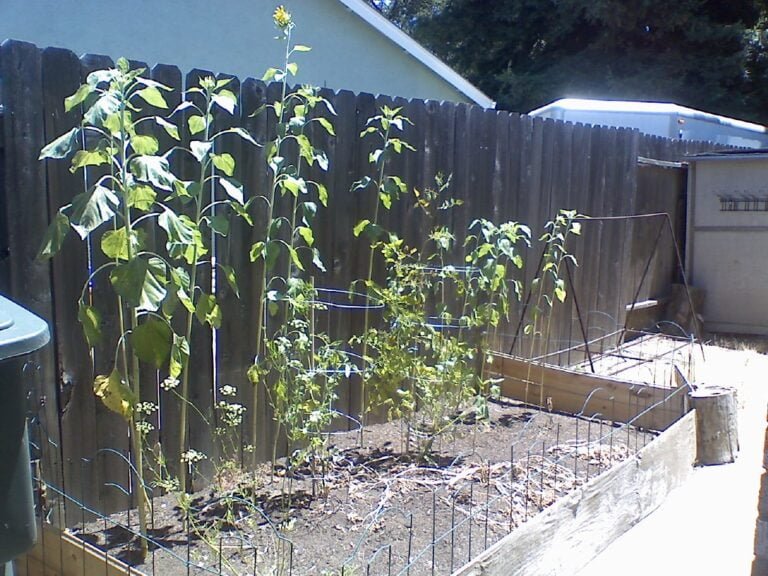Preparing Your Chicken Coop for Winter: A Comprehensive Guide
To prepare my chicken coop for winter, I seal gaps with weatherstripping and insulation. I guarantee proper ventilation by balancing air circulation and adjusting vents. Fresh bedding and insulated nesting boxes keep my chickens warm. I use heated waterers to prevent freezing and secure entry points from predators. Regular maintenance is key for a cozy coop. Implementing these measures creates a comfortable environment for my feathered companions during winter.
Draft Prevention Measures
To guarantee a cozy and draft-free environment for your chickens during winter, it is vital to seal any gaps in the coop using weatherstripping, caulk, or insulation. Draft prevention plays a critical role in maintaining a comfortable space for your chickens while ensuring fresh air circulation and preventing heat loss. One effective method is to inspect the coop for any openings that may allow drafts to enter, such as gaps around windows, doors, or vents. Sealing these areas with weatherstripping or caulk can help create a more insulated environment for your feathered friends.
In addition to sealing gaps, balancing ventilation is key to preventing drafts. Adjustable vents offer a practical solution by allowing you to control the airflow within the coop. Proper ventilation helps maintain air quality and prevents moisture buildup, but it is vital to strike a balance between airflow and draft prevention. By strategically placing adjustable vents, you can ensure that your chickens receive fresh air without exposing them to chilly drafts.
Insulation Tips for Coop
Insulating your chicken coop with materials like fiberglass or foam board can effectively help retain heat and create a cozy environment for your feathered friends during winter. When insulating the walls and ceiling of your coop, it is important to ensure proper coverage to prevent heat loss. Fiberglass insulation is a common choice due to its thermal properties, while foam board offers excellent insulation and is easy to install.
To protect the insulation from curious pecking chickens, cover it with protective layers such as plywood or wooden boards. This not only keeps your chickens safe but also maintains the integrity of the insulation. Proper insulation not only ensures energy efficiency but also provides a comfortable environment for your chickens, shielding them from the cold temperatures prevalent in winter.
In colder climates, effective insulation becomes even more essential. A well-insulated coop helps reduce heating costs significantly by retaining the warmth generated inside. By creating a well-insulated space, you can keep your chickens warm and content throughout the winter months, promoting their health and well-being. Remember, a well-insulated coop is a key factor in preparing your chickens for the winter ahead.
Proper Ventilation Techniques
When it pertains to getting your chicken coop ready for winter, essential ventilation techniques are vital for maintaining a healthy environment. Vent placement tips and airflow management strategies play a pivotal role in regulating air circulation and preventing moisture buildup. By installing adjustable vents and balancing fresh air intake with draft prevention, you can guarantee your chickens stay comfortable and free from respiratory issues during the colder months.
Vent Placement Tips
How can we guarantee that our chicken coop is adequately ventilated to maintain ideal moisture levels and prevent condensation during the winter months? Proper vent placement is key. Vents should be positioned high on the walls to let warm, moist air escape, reducing the risk of condensation. This helps prevent respiratory issues and ammonia buildup. Adjustable vents are essential for regulating airflow based on weather conditions. Balancing ventilation in the coop ensures a dry, healthy environment for your chickens during winter. By strategically placing vents and making sure they are adjustable, you can create a comfortable space that promotes good airflow and minimizes moisture-related problems in the coop.
Airflow Management Strategies
To effectively manage airflow in your chicken coop during winter, prioritize strategic placement of ventilation windows to balance fresh air intake with draft prevention. Proper ventilation is essential for maintaining a healthy environment for your chickens by removing excess moisture and preventing respiratory issues. Controlled airflow through adjustable vents helps regulate the coop’s temperature and prevents ammonia buildup, ensuring ideal air quality. Positioning ventilation windows strategically prevents direct drafts while promoting vital air exchange. By implementing these ventilation strategies, you create a comfortable space for your chickens to thrive during the colder months. Remember, good airflow management is key to providing the necessary heat and air circulation needed for your flock’s well-being in winter.
Bedding for Winter Months
Implementing a deep litter method using materials like straw or wood shavings to provide effective insulation and warmth for your chickens during the winter months is essential. Ensuring your coop is well-prepared with appropriate bedding is vital for maintaining the comfort and health of your flock in colder temperatures.
- Regular Layering: To maintain cleanliness and provide additional insulation, layer fresh bedding regularly in the coop.
- Insulated Nesting Boxes: Keep nesting boxes well-insulated and clean to encourage hens to spend more time in them during the colder winter weather.
- Thick Bedding Layer: Implement a thick bedding layer to offer extra warmth and comfort for the chickens in the coop.
- Effective Insulators: Choose bedding materials like pine shavings that are effective insulators to help keep the coop cozy during the winter months.
- Cozy Environment: Create a cozy environment by ensuring the bedding is dry and free from moisture, which can compromise its insulating properties.
Water Sources in Cold Weather
When preparing your chicken coop for winter, ensuring accessible water sources remain unfrozen is important for the hydration and well-being of your flock in cold weather. Heated waterers play a critical role in preventing water from freezing, ensuring chickens have a continuous liquid water source. DIY methods such as adding ping-pong balls or using heated bases can be effective in preventing water sources from freezing over. Nipple waterers are another excellent option as they provide liquid water without the risk of freezing, helping to prevent frostbite in chickens during winter.
Monitoring water intake is essential during the colder months to make sure that your chickens are staying hydrated. If any areas do freeze, thawing them with warm water and creating a warm environment can aid in treating frostbite if it occurs. By incorporating these strategies into your winter preparations, you can help maintain your flock’s hydration in cold weather and reduce the risk of frostbite. Remember, a consistent and unfrozen water source is crucial for the health and comfort of your chickens during the winter months.
Coop Roost Considerations
Given the importance of proper roosting conditions for chickens, ensuring raised perches with appropriate dimensions is vital for their comfort and health. When setting up the roosting area in your coop, consider the following key factors:
- Roosts Placement: Position the roosts higher than the nesting boxes to encourage chickens to roost at night, as they naturally prefer elevated spots for safety.
- Roost Design: Provide a 2-inch wide roost with rounded edges to prevent foot injuries and discomfort for your feathered friends.
- Natural Wood Branches: Chickens enjoy roosting on natural wood branches as they offer a more comfortable and secure grip for roosting.
- Roosting Space: Allow 8-10 inches of roosting space per chicken to ensure they have ample room to perch comfortably without overcrowding.
- Regular Cleaning: Cleaning the roosts regularly is essential to prevent mites infestations and maintain a hygienic environment for your chickens’ health.
Security Measures for Winter
Positioning the roosts higher than the nesting boxes not only encourages chickens to roost at night but also plays an important role in enhancing coop security during winter months. To guarantee security in the colder season, it is vital to secure all coop entry points to prevent rodent infestation. Using hardware cloth to cover ventilation openings helps maintain airflow while keeping unwanted guests out. Additionally, installing predator-proof latches on doors and windows adds an extra layer of security against potential threats.
Consider integrating motion-activated lights or alarms to deter predators during the darker winter months. These can help scare off unwanted visitors and protect your flock. Regularly inspect your coop for any signs of damage or wear that could compromise its security. Addressing issues promptly can prevent larger problems from arising later on.
Proper insulation in the coop is essential to keep your chickens warm and comfortable during the cold months. Make sure there are no drafts and that the coop retains heat effectively. By implementing these security measures and ensuring your coop is well-maintained, you can create a safe and secure environment for your feathered friends throughout the winter.






